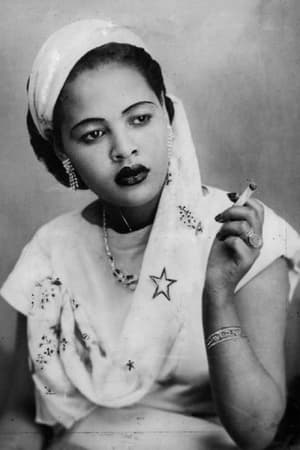Biography
"Born in Addis Ababa, Mercato district, Mahmoud was enthralled with the music he heard on Ethiopian radio from an early age. Having poorly learned in school, he worked as a shoeshiner before becoming a handyman at the Arizona Club, which was the after hours hangout of Emperor Haile Selassie I's Imperial Bodyguard Band. One night in 1962 when the band's singer didn't show up, Mahmoud asked to sing a few songs. He soon became part of the band's regular lineup, where he remained until 1974.
After cutting his first single with Venus Band "Nafqot New Yegodagn" and "Yasdestal" in 1971, Mahmoud continued to record with several bands for the Amha and Kaifa record labels throughout the 1970s. The overthrow of Emperor Selassie and the suspension of musical nightlife under the military government created shifts in the Ethiopian music industry—the Imperial Body Guard Band were no more, and Mahmoud continued to make hit records and cassettes with many musicians who remained in the country, including the Dahlak Band, and the Ibex Band. He also began to release solo cassettes, accompanying himself on the krar, guitar or mandolin.
By 1978, censorship laws prevented Mahmoud from releasing his music on vinyl and so he switched to releasing cassettes. In the 1980s, Mahmoud operated his own music store in Addis Ababa's Piazza district while continuing his singing career. With many Ethiopian refugees living abroad, Mahmoud became one of the first modern Ethiopian music makers to perform in the United States on a 1980–1981 tour with the Walias Band, Getatchew Kassa, and Webeshet Fisseha. Mahmoud soon began releasing records with the Roha Band and became popular in diaspora communities.
In 1986, Mahmoud's music reached a larger western audience when the Belgian label Crammed Discs released the collection Ere Mela Mela drawn from two Kaifa LPs Mahmoud had recorded in Addis with the Ibex Band a decade earlier, one being self-titled (ማሕሙድ፡ኣሕመድ). Ethiopia was making headlines in the west because of political repression and famine, and the contrasting tone of Mahmoud's first international release received much acclaim in the burgeoning world music community. Mahmoud gained even greater international popularity in the late 1990s after Buda Musique launched the Éthiopiques series on compact disc. This led to new recordings and tours in Europe and the United States with Boston's Either/Orchestra and Badume Band. Though he has made his home in Addis Ababa and works with a number of NGOs and philanthropic causes, he continues to tour internationally, performing concerts both for world music fans as well as the Ethiopian diaspora.
In 2007, Mahmoud won a BBC World Music Award.
While Ere Mela Mela made him a household name, Mahmoud is generally known for his Tizita, a genre that reminisce the past – slow and groovy style of music, Tew Lemed Gelaye with close to three million views on YouTube is one of his enduring Tizita music of the modern era. Though unknown to many people, Mahmoud is a visual artist who creates art in drawings and illustrations. He illustrates various themes with a pencil, depending on the mood of the period. He was once approached by the Alliance Ethio-Française in Addis Ababa to exhibit his works but he declined."
-Wikipedia




